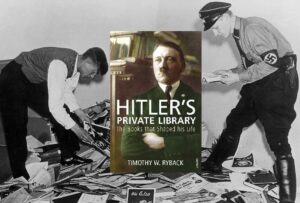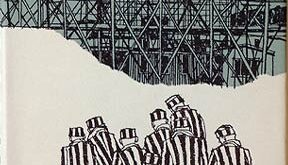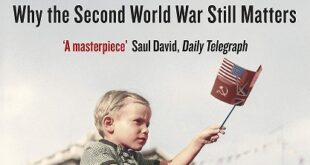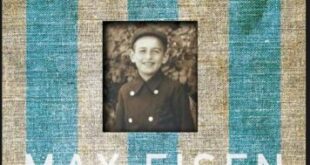 Book Review by Michael from @ww2bookreviews (instagram)
Book Review by Michael from @ww2bookreviews (instagram)
The German poet, Heinrich Heine, once observed that “where they burn books, they will ultimately burn people also”. His words turned out to be prophetic, as his own books were burnt by the Nazis during the 1930s. Adolf Hitler, the German dictator who led the Nazi Party to power in 1933, is better known for the books he wrote, especially ‘Mein Kampf’, than the ones he read. So, while his regime was burning books, what books was Adolf Hitler reading?
By the time Hitler died in 1945 he owned an estimated 16,000 volumes – the works of historians, philosophers, poets, playwrights, and novelists. For Hitler, his library represented a Pierian spring, that metaphorical source of knowledge and inspiration. He drew deeply there, quelling his intellectual insecurities and nourishing his fanatic ambitions. He read voraciously, at least one book per night, sometimes more, so he claimed. “When one gives one also has to take,” he once said, “and I take what I need from books”. This quotes comes from “Hitler’s Private Library: The Books that Shaped his Life” by Timothy Ryback.
This fascinating book provides a systematic examination of Hitler’s personal collection. Remarkably, the remnants of Adolf Hitler’s library occupy shelf space in a climatised room in the Rare Book Division of the Library of Congress in Washington DC. Here are the 1200 volumes that have survived from Hitler’s three libraries – from his private residence in Munich and Berlin, and from the Obersalzberg near Berchtesgarden. The books that constitute the Hitler Library were discovered in a salt mine near Berchtesgaden by soldiers of the US 101st Airborne Division in the spring of 1945.
Ryback seeks out in his exploration of this despot’s reading habits those books that ‘possessed emotional or intellectual significance for Hitler’. This is one of the most interesting aspects of Ryback’s book. These works range from a guidebook to Berlin that sparked Hitler’s desire to make it ‘the capital of the world’ to Madison Grant’s chilling racist tract ‘The Passing of the Great Race’.
Paperback, @vintagebooks, 2010, 299 pages.
Photo credits: teenvogue.com, getty images
 WW2 HistoryBook World War II historical images. WW2 book reviews and movie reviews.
WW2 HistoryBook World War II historical images. WW2 book reviews and movie reviews. 

